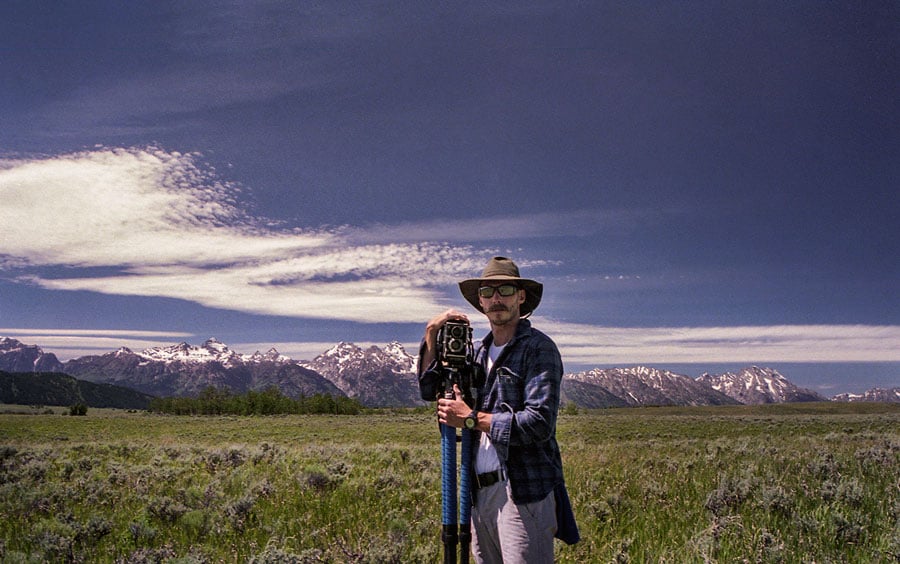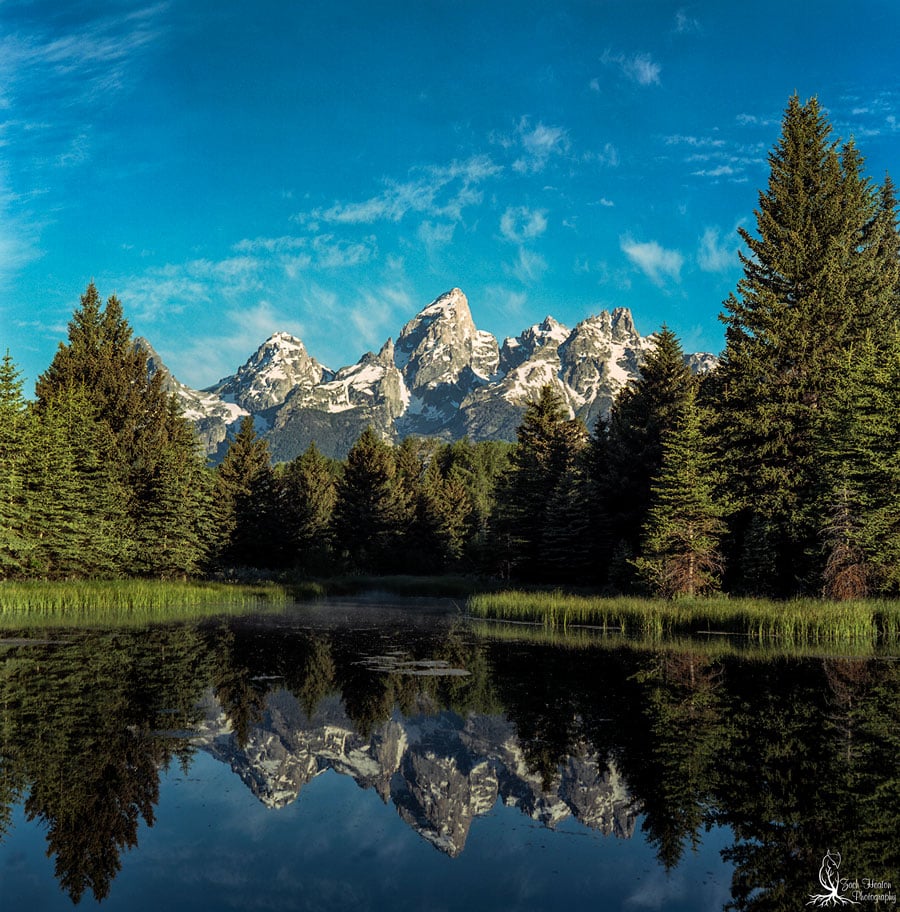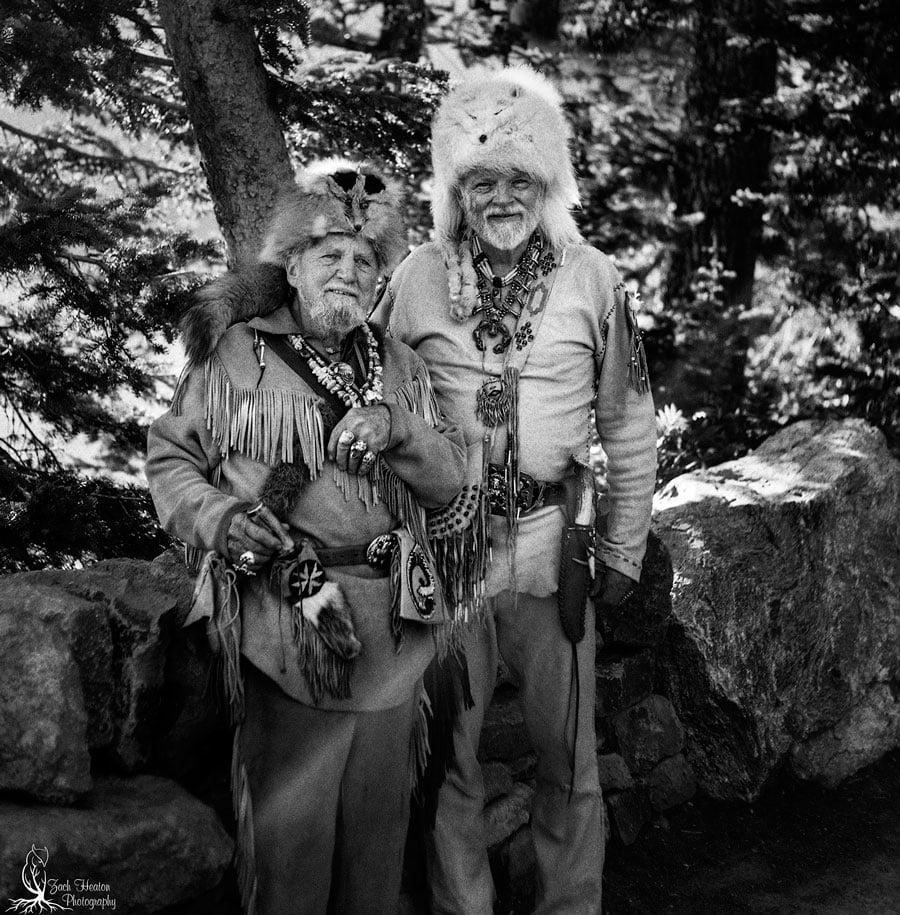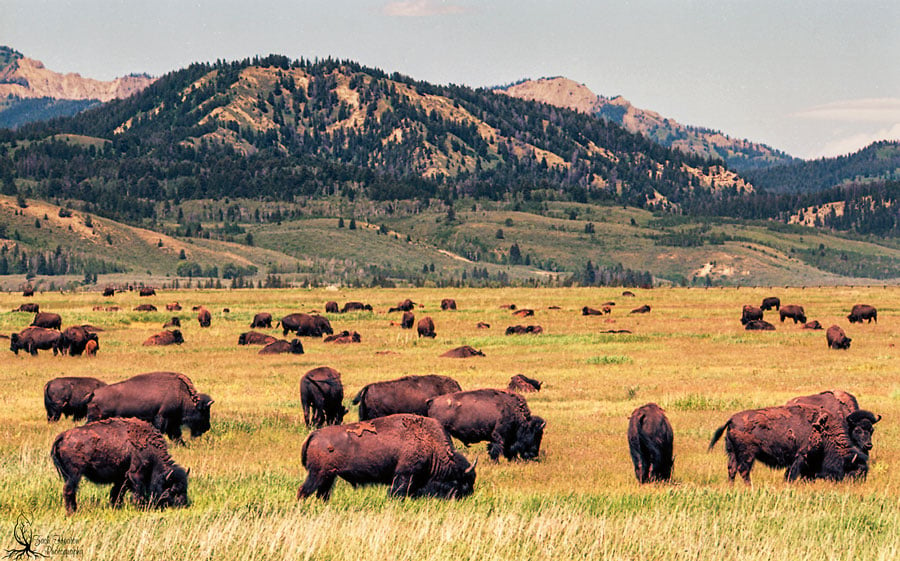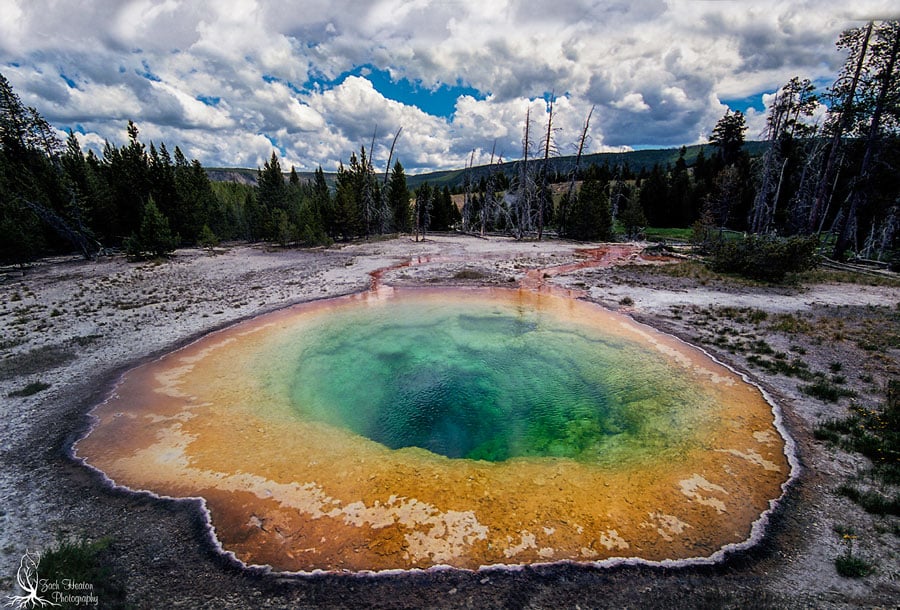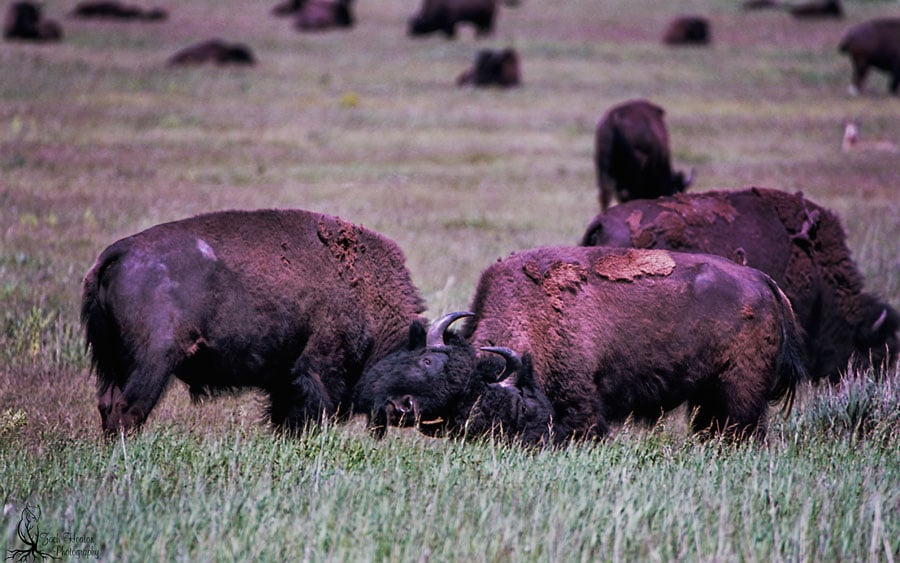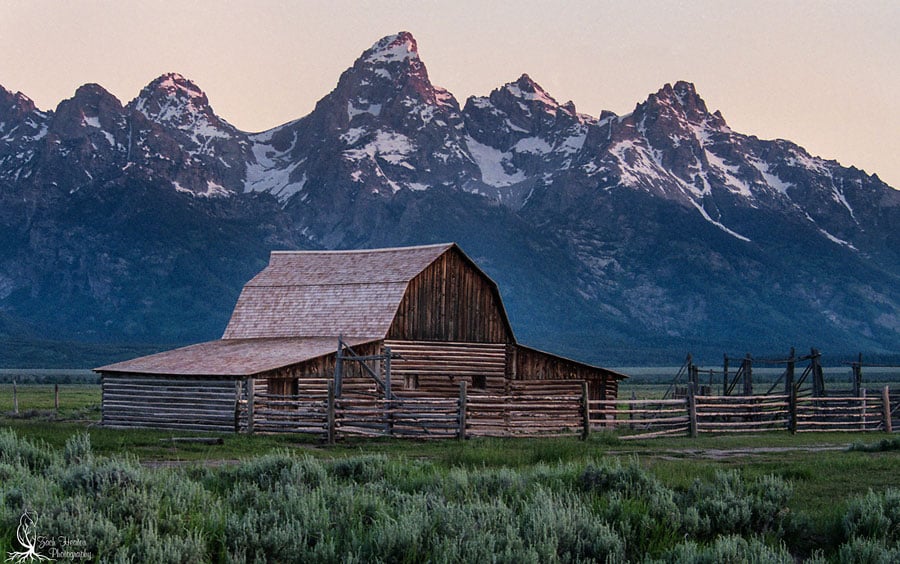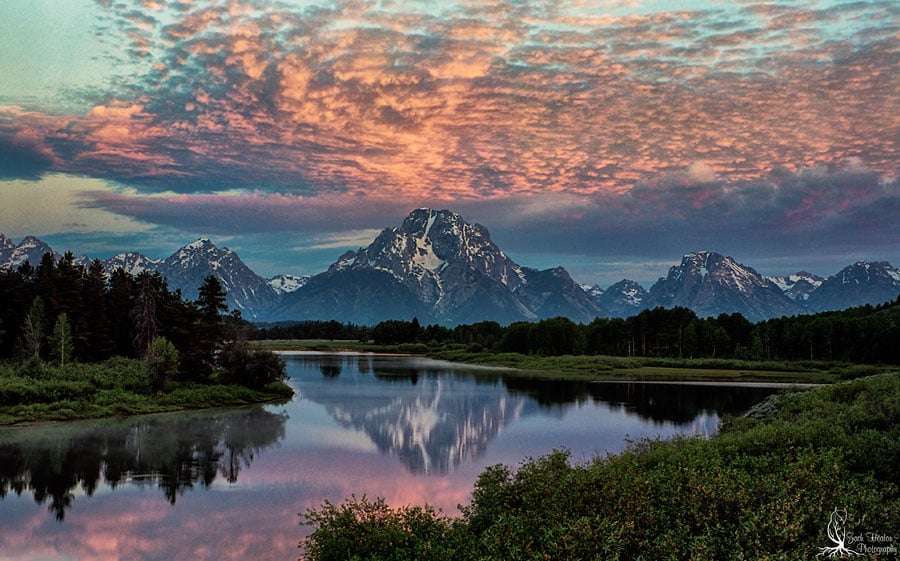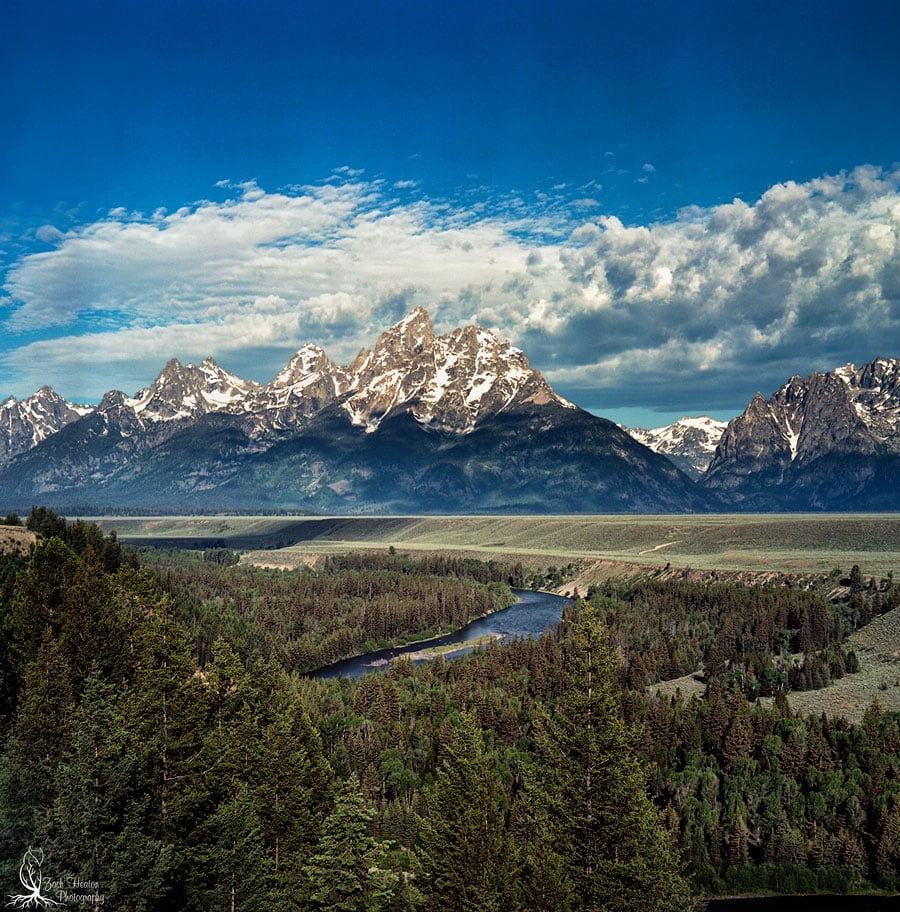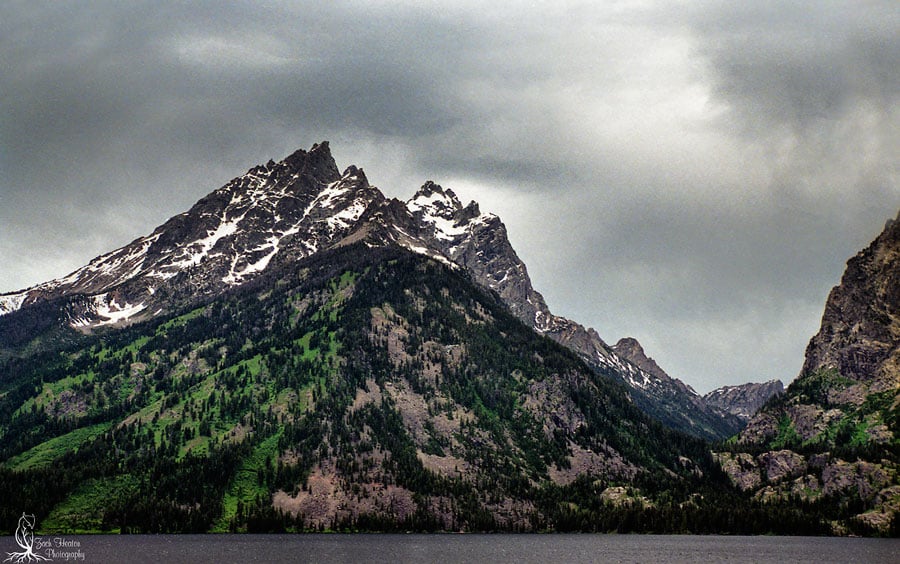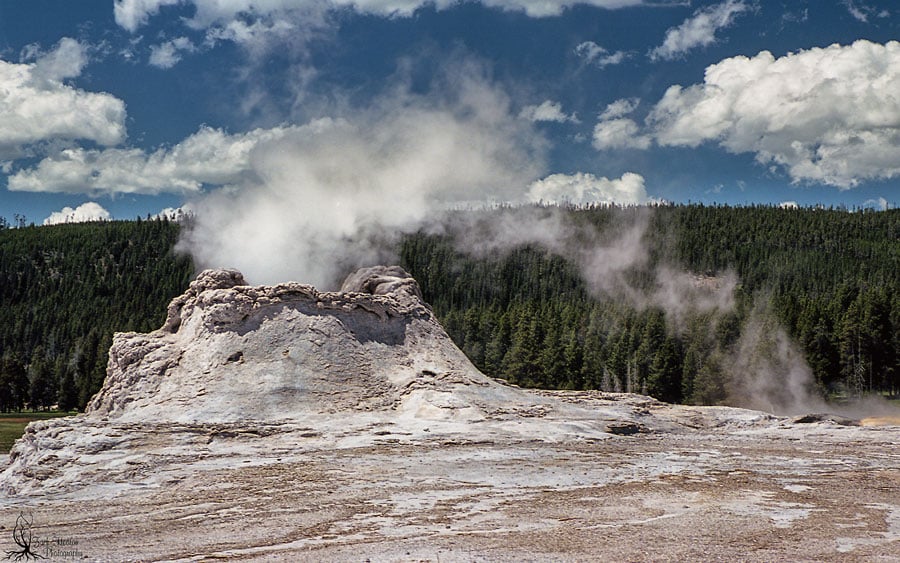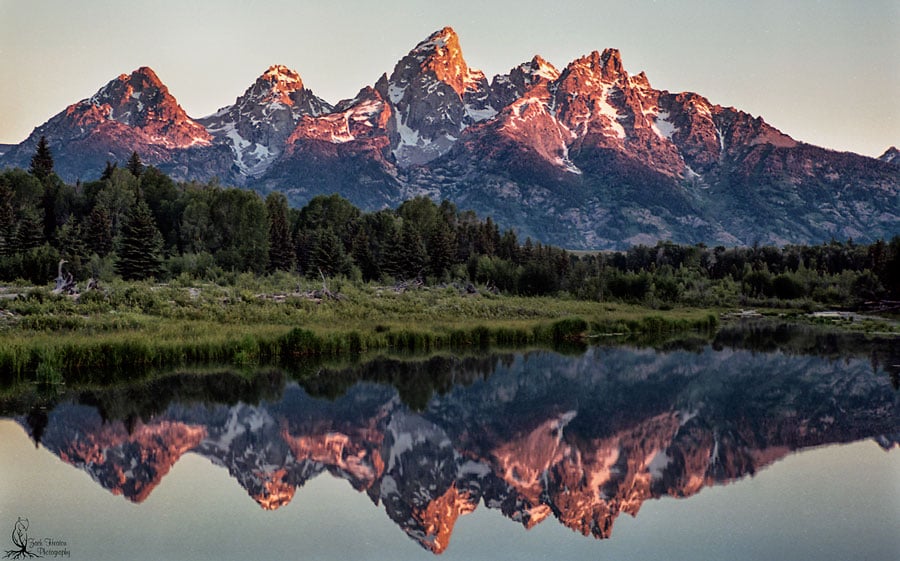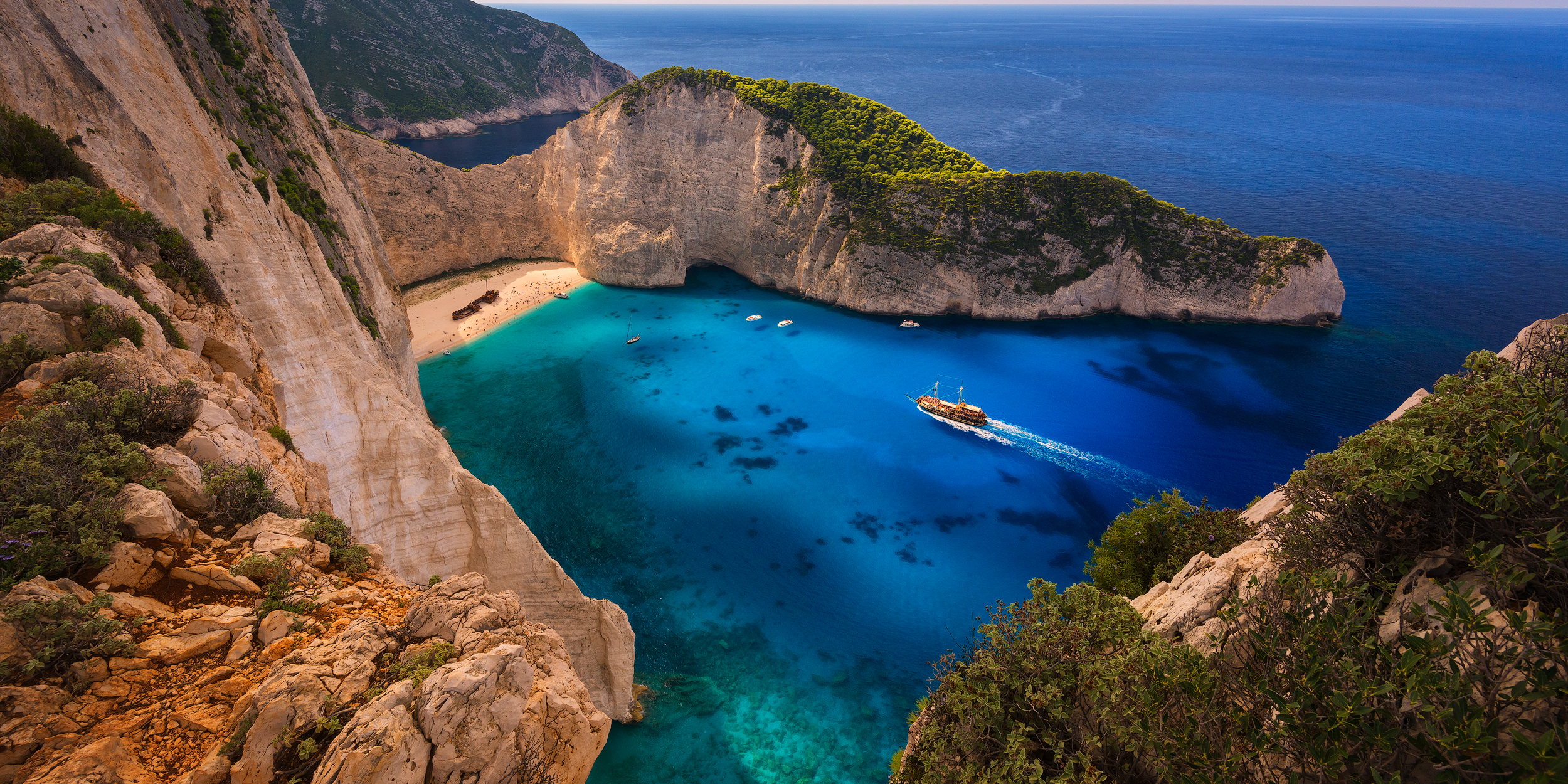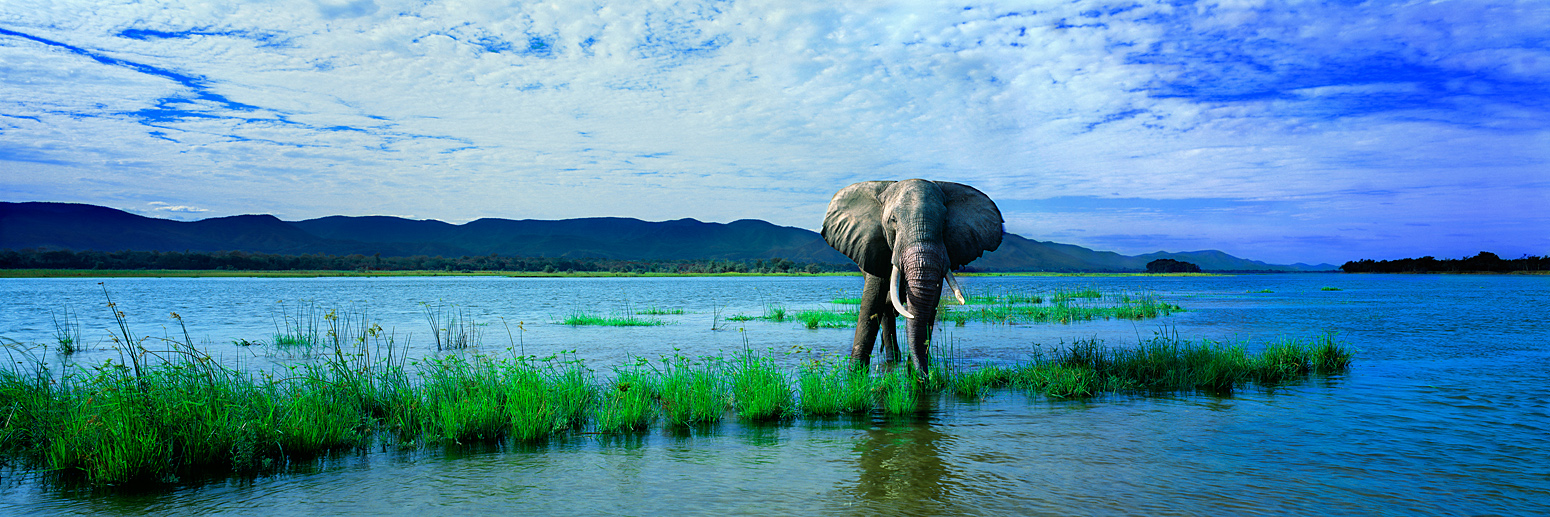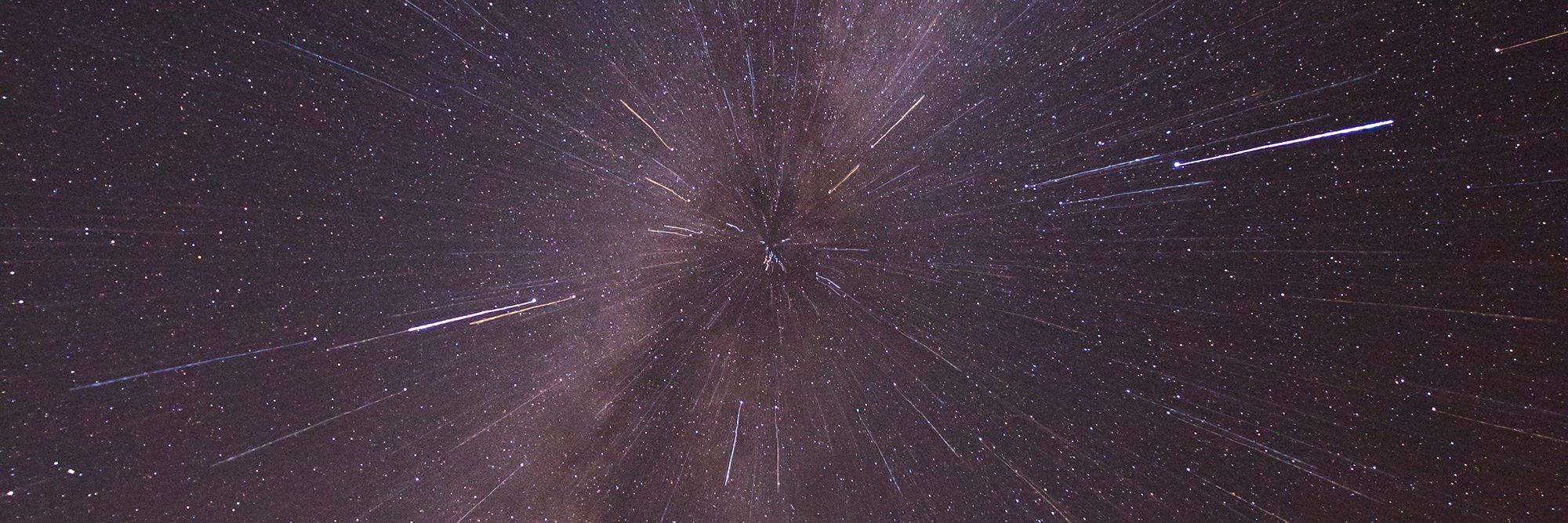Turn Around to Tomorrow: The Grand Tetons and Film
By Zach Heaton
Growing up I can always remember my grandfather having a camera by his side, taking pictures or running the camcorder capturing the moments everyone was enjoying so we could look back on something when we grew older. As time passed I slowly progressed in photography and I began looking for more ways to explore the art. I can remember the day I was at my grandfather’s house digging through piles of junk in the garage when I came across a Pentax K1000. I didn’t realize it at the time but this SLR would become my first film camera and would jump start my analog career. From that day forward I knew I was going to be hooked. Since then I’ve acquired different parts of the art from good friends who have helped me along the way on this journey. I now have a fully operational dark room for developing, enlarging and scanning B&W or Color film, which I knew would be a great tool for what the future holds.
I recently spent some time in the Grand Tetons National Park facilitating with Ed Heaton Photography. During my time there I wanted to inspire and be inspired by something I had never done before. Shooting film has long since faded out of the public eye but still lingers in the shadows. Visiting gas stations to gift shops you can still find a Fuji Film one time use camera hanging on a forgotten part of the shelf that at one point in a lot of our lives we have used. Most of the folks I talk to about the distant hobby have given me their insight on why they switched to digital and of course the diehard fans who have not switched and most likely never will. Shooting film for me has been a dream since I can remember and it is time to put it to good use.
My adventure started in Philadelphia on Friday June 17th at 4am. Hand checking film through TSA and jumping on the plane, not sleeping because of the excitement I knew was ahead of me. It took most of the day to make it to the Tetons but it is after all about the journey not the destination. Once we landed it was wheels up taking a seven-hour drive from Salt Lake City to Jackson, Wyoming. Beautiful landscapes that take your breath away and scenes I will never forget. What seems like such a long time ago all comes back to you in a split second. My first visit to Jackson was 5 years ago, when photography made a real impact on my life. It’s amazing how much you grow in that amount of time. Shooting mainly digital and a small amount of film here and there I’ve slowly transitioned into shooting mainly film and little to no digital. Now days if I’m caught out there’s a film camera in my hands which was an easy jump for me since the love was already there and the knowledge I gained. I have a connection with analog that’s been in existence for some time, all I had to do was explore it further. I spent a lot of time reading everything I could get my hands on about photography. The first photography book I was ever introduced to was Bryan Peterson’s “Understanding Exposure”. After that I spent a lot of time searching the interweb looking for new tips and tricks I could learn that would help improve what I was doing and how I was helping others. If you can shoot digital you can shoot film it may just be a little more effort. The same basic principles apply, reading light, exposure and composition. Now all you need to know is how long your exposed film sits in a bath to get perfect images. Perfect for what you’re looking for is key. It’s your art, no one else’s. You get the physical connection with this from the time you set up your composition and press the shutter to the time you develop your roll and see what you created, it is all part of the process. Something you can have when your hard drive crashes on you. A manual sense of accomplishment. I believe I have a much stronger connection to my film because I develop on my own, I give it life, without me it would just be an image on a roll. developing your own film gives you a better relationship with your photography. I can walk up to a scene and tell you exactly what your triangle is going to be before I even get a meter out. When it’s something your heart is truly in you practice and practice every day and think nothing of it because you love it and will give it all you have to be great at it.
The first location we visited was Oxbow Bend for a gorgeous sunrise. Sitting and watching the entire moment unfold in front of me was the true beauty. I would have been alright not even getting my camera out for this but I am a photographer and capturing light is something we all love and do. Shooting with a Nikon F5, Tamron SP24-70 and a Singh-Ray LB Color Combo I set up at F\16 and fired a 20 second exposure. Only taking one image that morning and spending the rest of the time taking in the fresh air, sounds of the mountains and the beautiful view. There’s nothing like it.
Spending some time before I shoot is a process in itself. Studying a scene and making sure everything in my image is correct. Checking my exposure and aperture, moving my composition to get rid of any unwanted visual boogers. Then double checking all of that again just to be sure. I don’t fire off 13 images at one location. I shoot one. Two if I know I made a mistake and the camera shook or the wind blows, maybe a goose flew in and wrecked into my tripod. I’ve been told numerous times that the best way to improve is to slow down and you also learn more by listening rather than speaking.
Coming from Pennsylvania to the Tetons is a little bit of a time shock. We would be up at 3:00am to get on location for sunrise. This was my 5 o clock which isn’t bad but when we stayed up to shoot sunset it would be 10:00 which is mid night for us. Now let’s add in staying up till mid night in Wyoming time to shoot the milky way and still get up at 3am to catch the morning light. That’s a rough day. But well worth it. I can’t describe how beautiful the mornings are in the mountains. Something magical about the first light kissing the peaks and watching it slowly dance down through the valley. With only a few days to shoot personally before the workshop starts is tough to manage. If you don’t photograph before you will be tired and uninspired after. Finding inspiration after going to sleep late, working all day and waking up early every morning for 11 days is strenuous but can be done.
The last day of the workshop was spent exploring the geyser basins and pools within Yellowstone National Park. Nothing like it. This area is other worldly and there was plenty of opportunities to get some great photographs. The film images gave the landscapes such a great feel and I believe it truly captured the emotion of these ancient lands. When we first arrived the crowds were a little unruly and there isn’t a thing you can do except cut free and take a different path. At first glance the scenes reminded me of the original “Planet of the Apes”. Like I said other worldly. I spent the entire time shooting with the F5 and I was alternating between the Tamron SP24-70 equipped with a Singh-Ray LB Color Combo circular polarizer to give that extra pop in color and knock down the glare. I was also carrying Tamron’s SP15-30 wide angle lens that helped me capture that much more. These two lenses combined were an unstoppable force. This was my first professional visit to Yellowstone so I had a lot of work to do. The inspiration hit me like a ton of bricks that day and I was seeing so many great scenes. It’s a place to put on the list if you’ve never had the chance to visit.
With the workshop finished it gave me a few days to sit back and relax but that didn’t happen. I stayed out late again shooting at Mormon row and up early again for sunrise at Schwabacher’s landing. When you’re in the Tetons I don’t think there is time to relax. There’s way too much beauty to be seen and captured. The only real time we had to relax was when we sat down for a meal with the group. Even then you’re on your toes with questions from the day. No complaining coming from me, this is what I do and I love doing it. Teaching and inspiring is a great sense of accomplishment. When I can help someone learn how to create an image and share with them the knowledge to recreate it solo, That’s the golden ticket. Getting gorgeous pictures is great but I would rather someone come away with the information to re-create this moment on their own. Teaching and showing are two different things.
Most of the images in this article were taken with a Nikon F5 using Tamron Lenses, Sing-Ray Filters, a Really Right Stuff Tripod. Kodak Ektar100 was my film of choice for this trip because I wanted the extra hit of color in my images to make more of an impact. I believe it worked pretty well and I’m extremely happy with the results. My development process was using UNICOLOR C41 chemicals and my development times were as follows PREHEAT 102 Degrees \ 1Minute | Develop 102 Degrees\ 3:30Minutes | BLIX 6:30Minutes 95 Degrees | Wash 2:00Minutes | Stabilize 1:00Minute. Scanned negatives using an Epson V600 Flatbed Scanner at 4800 DPI. I shot two rolls of 35mm and five rolls of Ektar100 medium format using a 1962 Mamiya C3 Twin Reflex 80mm (a present I received from my grandfather on my 30th birthday just before he passed away.) and a Sekonic handheld Light meter.
I would like to give a big thanks to Ed Heaton for bringing me in on the team of instructors and also for being a great mentor throughout the years. You’ve taught me a lot about the art of photography and then some. Kelly Heaton for always reminding me to be creative and see things my own way, without you I wouldn’t have my great imagination. Bobbi Petherick for always being by myside and always giving me support, you are my inspiration. Of course I can’t forget those who have helped me achieve greatness in the Bomb shelter. Without all of you my Darkroom would still be an idea and you made it a reality. For that I am grateful.
